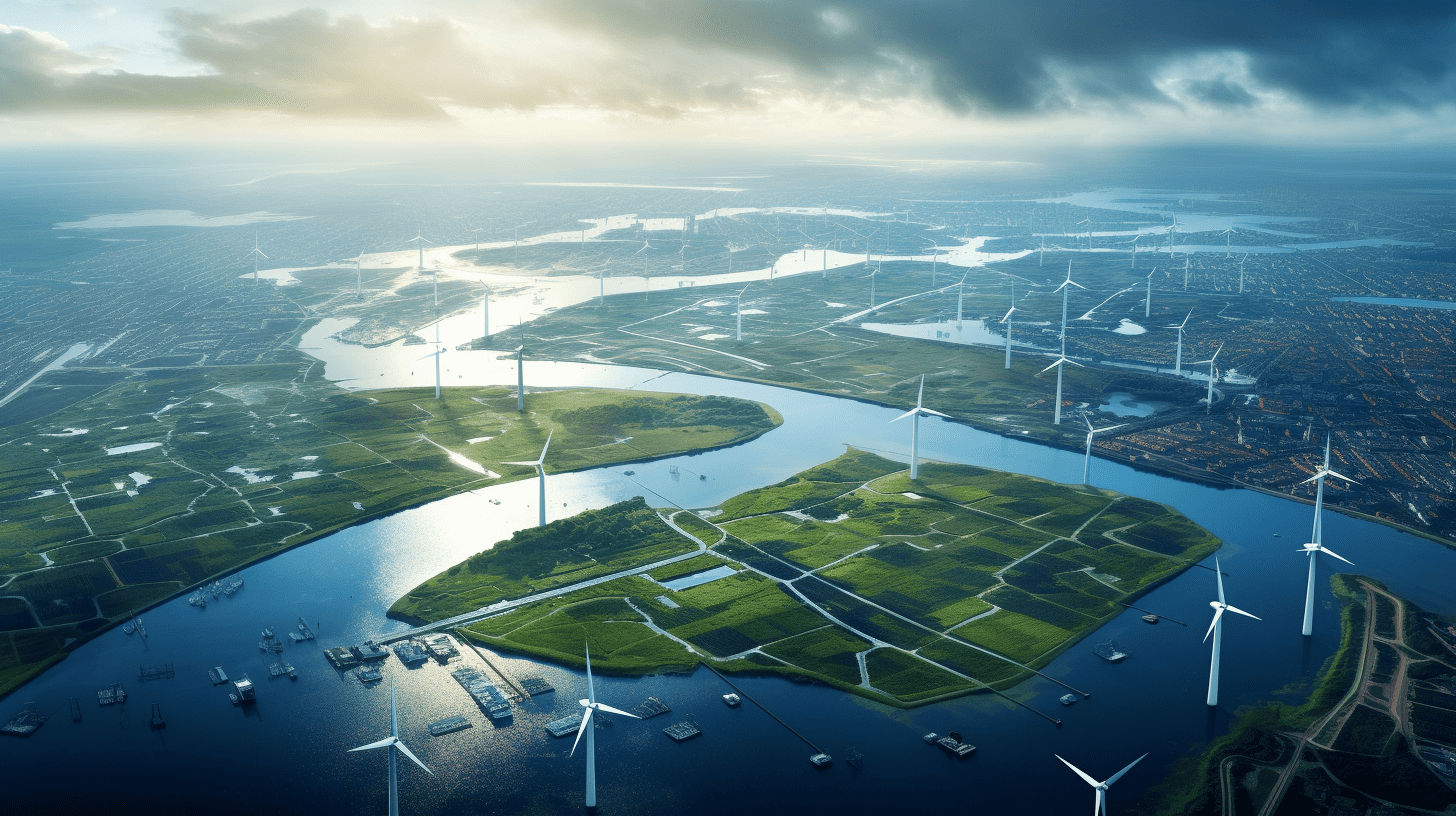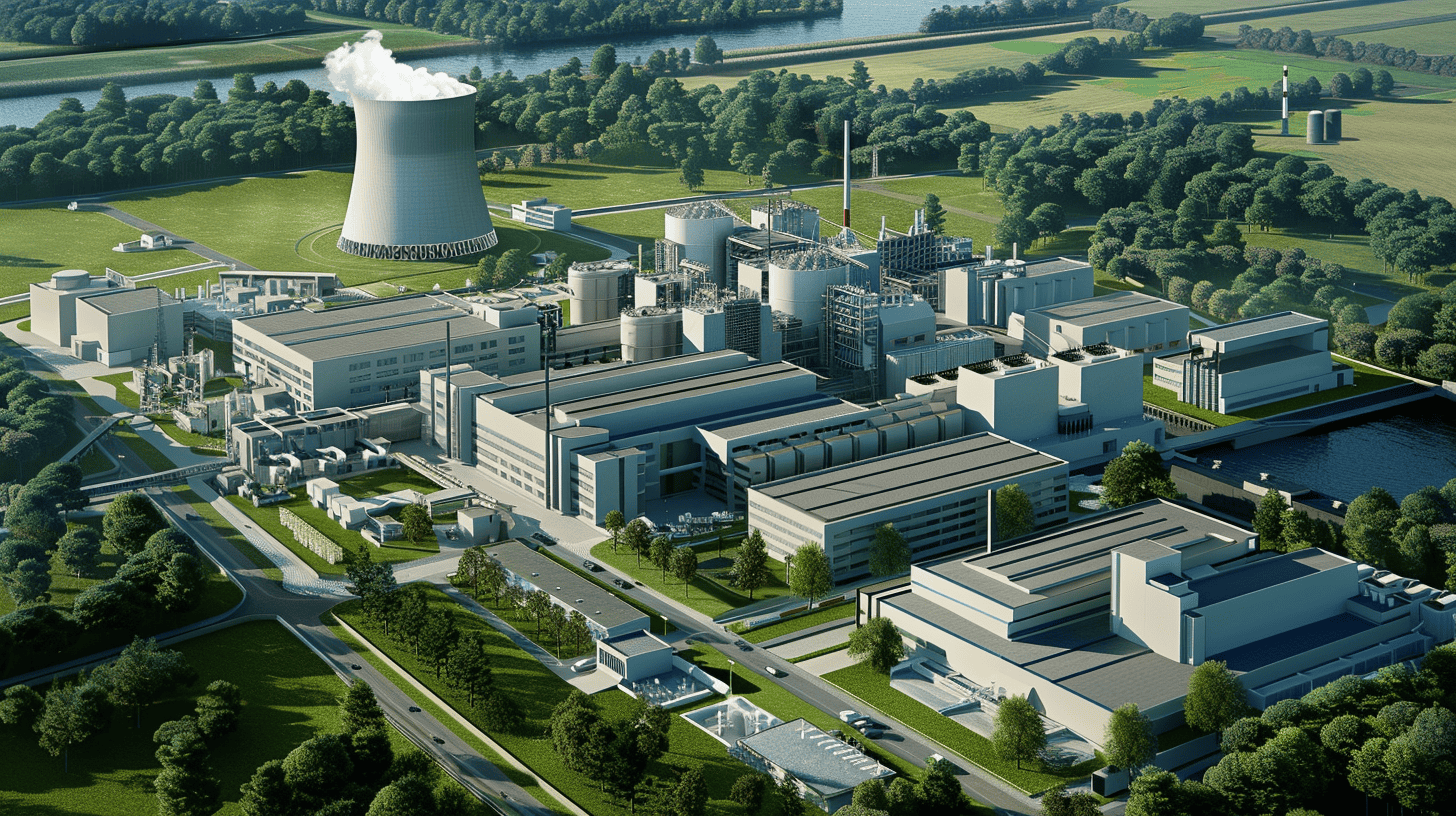
This is the first part of a series about the measures that Poland is taking against environmental pollution and global warming. Tomorrow, part two will be devoted to the transition to electric buses in public transport.
The sight of the Belchatów brown coal power station is both forbidding and impressive. A huge hole several tens of meters deep and kilometers wide stretches out in front of the power station. The plant spits out thick clouds of smoke day and night. Everything in the hole is dead. Except for the gigantic trucks that are constantly driving back and forth between the quarry and the power station. The area around Belchatów is regularly shrouded in mist and the smell around the power station intensifies in winter thanks to the numerous households in the area that are still kept warm with old-fashioned multi-burners.
It should come as no surprise that the power station in Belchatów was regularly criticized at the climate summit in Katowice last year. Belchatów is the world’s largest brown coal power station. And it is the greatest, single emitter of carbon dioxide in the EU, with more than 38 million tonnes of CO2 per year. It is also one of the reasons why Poland is often called the dirty man of Europe.
The fact that Poland depends on coal and brown coal for almost 80% of its electricity is a thorn in the side of Brussels. Even worse, it is felt that Warsaw is also not prepared to abandon its dependence on coal. The furthest Poland has been willing to go so far, is to reduce its dependence on coal by roughly 50% by 2040. The government deems anything more than that to be too expensive. Poland therefore has declined to sign the EU protocol on the supply of CO2-neutral energy by 2050. Just as the Czech Republic and Hungary are also refusing.
The Netherlands emits more CO2 than Poland
This intractable attitude towards Brussels could give the impression that nothing at all is happening in Poland with regard to improving the environment. But that is not true. In a series devoted to environmental and climate measures, Innovation Origins will show that Poland is even ahead of the rest of Europe in some respects.
Read also: Coal Curtain replaces the Iron Curtain
For a start, the figures reveal that we, as The Netherlands, ought to be cautious in our criticism. Because of its high energy consumption per capita, The Netherlands emits more CO2 than Poland does. In 2017, Poland accounted for 319 million tonnes and the Netherlands for 175 million tonnes. In per capita terms, that amounted to 8.4 tonnes of CO2 per Polish person and more than 10 tonnes for one Dutch person. So the situation in Poland is not that dire after all.

Also, the right-wing populist government PiS party seems to be realizing that doing nothing about climate policy is no longer an option either. For example, the government recently announced that with Michal Kurtyka, a special minister for climate issues has been appointed. While the conservative pro-coal minister Krzysztof Tchorzewski has since vanished from the cabinet.
And last week, Prime Minister Mateusz Morawiecki said in Parliament: “Conventional energy sources will remain important for our energy system for a long time to come, but the situation is changing. There was a time when we couldn’t afford to invest in renewable energy sources. But now we can’t afford not to invest in them.”
Societal change
But the most important thing is that Polish society is changing. Nature and environmental policies are becoming increasingly important. The most noticeable change over the last few years was the increase in the number of protests against the extremely high levels of fine particles (smog) during winter months.
Last year, the European Environment Agency (EEA) estimated that 44,000 people in Poland die prematurely from poor air quality every year. Living in Warsaw for a year would be equivalent to smoking 1000 cigarettes. No wonder that the purchase of air masks was one of the biggest sales successes last year.
The response to this criticism is still a little slow at government level. The scheme to replace old multi-burners in houses with new ones is going rather sluggishly. Even though on paper as much as €25 billion has been made available for it.
Smog cities take steps towards banning multi-burners
The situation is different in municipalities and towns. In Krakow (long known as smog city number 1) multi-burners that emit too many fine particles and nitrogen oxide were banned this year. Other cities are also taking steps in this direction. Most experts therefore expect that the problem with the old polluting multi-burners – by far the most important cause of fine particles – should be solved in the not too distant future.
Another reason for optimism about air quality is the rapid deployment of electric buses. According to Solaris Bus & Coach (a local manufacturer of buses and trams from Bolechowo, a suburb in Poznan), there are already 16 cities with battery-operated buses. This is a win-win situation for Poland, as most of the E-buses come from their home country. In addition to Solaris, electric buses are also being manufactured in Poland by Volvo, Scania, MAN and Rafako E-Bus.

Companies for a cleaner environment
Companies aren’t just standing still either. Press agency Reuters reported this month that 20 major companies have signed up to the EU targets for CO2 neutrality by 2050. In defiance of the Warsaw government. Among them are the PKN Orlen refinery and PKO Bank Polski, both state-owned. The Polish subsidiary of the ING Bank has also signed. As have subsidiaries of the French company Orange (telecom) and the German company Innogy (chemistry).
“Of course, we will not achieve the goal of climate neutrality overnight. However, it is important that we take immediate action,” says the Charter of the 20 companies. Deputy Director of ING Bank Śląski Joanna Erdman told Reuters that signing this document is a very natural step for the bank. ING was also one of the first lenders who refused to continue financing new coal projects.
Erdman: “At the moment, the discussion in Poland revolves around whether we ought to endorse the CO2 targets. When it should actually be about how we want to achieve that.”
As I said, this message from companies is slowly but surely beginning to resonate with the government in Warsaw. For instance, after parliamentary elections in October, the energy plan for 2040 has been partially amended in favor of the environment. For one thing, according to the old plans, all onshore windmills were supposed to disappear. That’s because they were considered too unsightly. Now the aim is to keep capacity at about the same level.

Gigawatts on the rise
Warsaw wants to make a decisive leap forward as far as solar energy is concerned. This year, the 1 gigawatt threshold will be exceeded for the first time. A further 15 gigawatts will be needed over the coming 20 years. The VAT on solar panels has been reduced. And an incentive fund of € 235 million has been set up for private individuals as well.
The government foresees slightly slower development when it comes to offshore wind energy. Poland prefers to wait until this technology becomes cheaper before investing heavily in it. Expectations are that this will happen after 2025.
Lastly, Prime Minister Morawiecki sees an important role for “clean” nuclear energy as an alternative to coal. Poland is one of the few countries in Eastern Europe that does not yet have a nuclear power station. That will nevertheless have to change by 2033. Warsaw states that nuclear reactors are an important alternative to coal-fired power stations. This is because they are ‘adaptable’. Which basically means that they can be cranked up at night when the wind isn’t blowing. Or in winter when there is hardly any sun. That will ensure that there is never a shortage of electricity.
Independence from Russia
There is something that plays a role in the background to all these plans for 2040. And that’s the desire to become independent of energy from arch enemy Russia as soon as possible. Alongside nuclear energy, the import of liquid natural gas (LNG) serves as an alternative to Russian coal and gas.
The electricity plan for 2020 and 2040 currently looks like this:
| The electricity plan for 2020 and 2040 | 2020 | 2040 |
| Brown coal | 8,6 gigawatt | 3,4 gigawatt |
| Coal | 15,6 gigawatt | 7,6 gigawatt |
| Gas and cogeneration | 2,4 gigawatt | 12,4 gigawatt |
| Onshore windmills | 9,5 gigawatt | 9,8 gigawatt |
| Offshore windmills | 0 | 8 gigawatt |
| Solar panels | 1,3 gigawatt | 16 gigawatt |
| Nuclear energy | 0 | 4 gigawatt |







